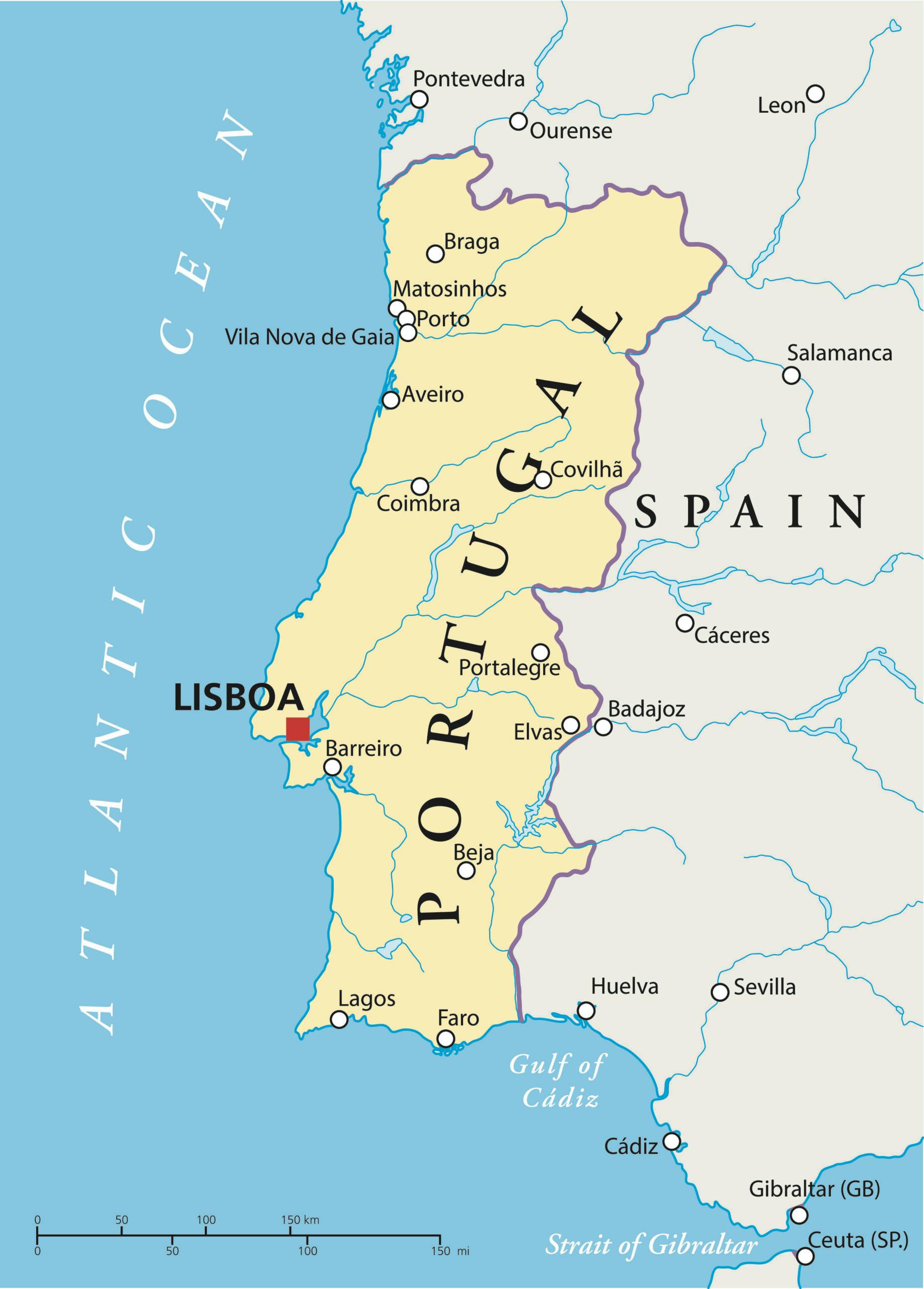Discover Portugal
Located on the Iberian Peninsula in southwestern Europe, Portugal is one of Europe’s oldest countries, its territory having been continuously settled, invaded, and fought over since prehistoric times. The Portuguese Empire once ruled Europe with spice-driven enthusiasm, its ship-sailing explorers plotting Age of Discovery sea routes. Nowadays, it’s the country’s Mediterranean climate, excellent food and wine, historical churches and palaces, and its 528 miles of beaches that are the main draw, especially with European travelers.
A popular destination for the British and French, Portugal is also becoming a favorite with Americans. Leisure travelers come for the miles of sandy beaches along the Atlantic coastline and for the islands of Madeira and the Azores, which are approximately 700-900 miles off the coast of the mainland. Culture lovers will relish in the country’s splendid palaces and castles, old Roman ruins, and its many Catholic cathedrals, monasteries, and convents. Foodies will enjoy the fresh seafood and cosmopolitan eateries of Portugal’s major cities as well as the wine regions that encompass the country, especially in northern Portugal’s UNESCO-listed Douro Valley. Those who prefer their trips more active will enjoy hiking and skiing in the mountains, surfing the waves, kayaking rivers, or mountain biking. Regardless of your interest, Portugal should be on every traveler’s bucket list—the perfect blend of relaxation, culture exploration, and active adventures.
Planning a trip to Portugal? Read on to find out when to visit, what to do, and more to make your vacation unforgettable.
What is the best time to visit Portugal?
Portugal’s temperatures vary by region, but the winters generally tend to be milder than the rest of Europe. Summers are hot and dry and are the busiest season, with inland areas being especially hot—most travelers will be headed towards the beaches for the cooler temperatures along the Atlantic coast. Autumn and springtime bring in warm, pleasant weather with April-May and September being the best months to visit—the crowds are smaller, and the weather is the perfect balance of warm days and cooler nights.
What is the best way to get to Portugal?
From the mainland United States, flights fly directly to Lisbon or connect through Europe. Direct flights from New York are often available from United, Lufthansa, or TAP (Air Portugal) and will take approximately seven hours to Lisbon. Flying with other European air carriers will almost always add one stop in Europe for a transfer so expect another few hours to fly between another European country and Lisbon.
How to get around in Portugal?
The most popular ways to get around Portugal are by car or train. Portugal has an extensive network of highways and roads, making car travel convenient and efficient, especially for casual explorations. If time is an issue, train travel is often the fastest way to get between cities and regions. You can purchase train tickets from the Official Portugal Rail website (Comboios de Portugal). Buses are also available, especially if traveling to smaller towns.
Do I need a visa to visit Portugal?
US citizens do not need a visa for stays up to 90 days. Citizens of other countries should check with their local embassy for entry requirements.
How many days should I spend in Portugal?
A week will give travelers enough time to see the major regions and cities but extending the trip to 10-12 days will allow for more in-depth exploration—especially if traveling by car while in Portugal. If you have more time, you will be able to explore some of Portugal’s smaller towns, rural areas, and wine regions as well as visit Portugal’s popular islands.
What are the top 5 places to visit in Portugal?
1. Lisbon
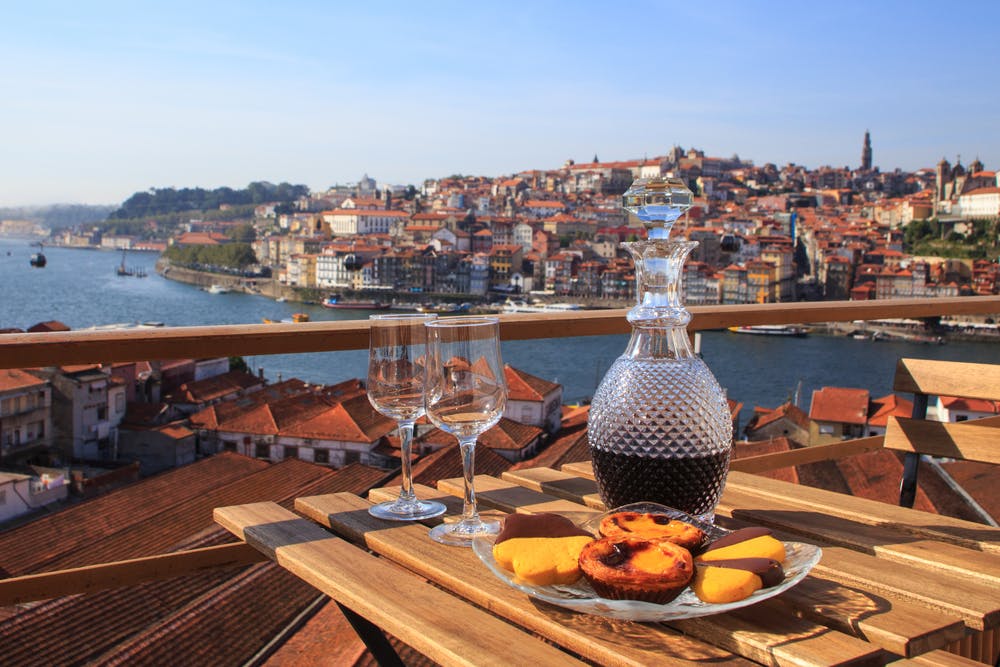
The capital of Portugal is the second oldest city in Europe (after Athens), and is full of colorful buildings, historic sights, and beautiful views of the Tagus River. Built on seven iconic hills, visitors can roam the maze of alleyways in the ancient quarter of Alfama, see the 12th-century Cathedral of Saint Mary (more simply known as the Lisbon Cathedral), and discover the elegant Chiado neighborhood with its many shops, restaurants, and 18th century buildings. Marvel at the 12th-century Saint George’s Castle, and take in city panoramas from the iconic, Neo-Gothic Santa Justa lift, a vertical iron structure with an observation platform and a walkway. Visitors will also enjoy excellent food, colorful azuelos (ceramic tiles) on many buildings throughout the city, as well as castles and other historic sights, gorgeous public gardens, and a vibrant nightlife scene.
2. Sintra
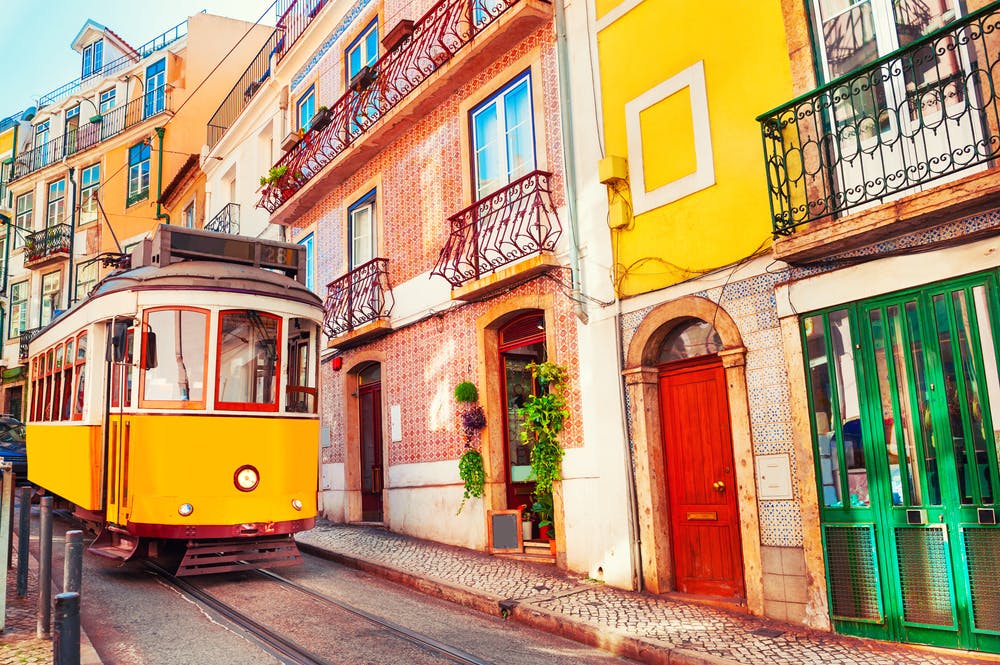
Situated in the mountains just outside Lisbon, this picturesque village is famous for its fairytale-like palaces, castles, and gardens. A favorite sight to visit is the Pena National Palace, a brilliant, yellow-colored castle that has roots going back to a monastery that was destroyed by an earthquake in the mid-1700s and was rebuilt as a magnificent palace in the 19th century. Winding paths take visitors through the beautifully manicured park that sits outside the palace. The city also hosts other palaces and castles, including the Arabian-inspired Monserrate Palace and the Neo Gothic Quinta da Regaleira with its garden full of waterfalls, secret grottos, and lovely fountains. Another palace worth visiting is the 14th-century National Palace of Sintra. While not as impressive from the outside as some of the other grand structures in town, the interior is lavish, with mosaics, tiled walls, and luxurious furniture that highlights how the nobility lived.
3. Porto
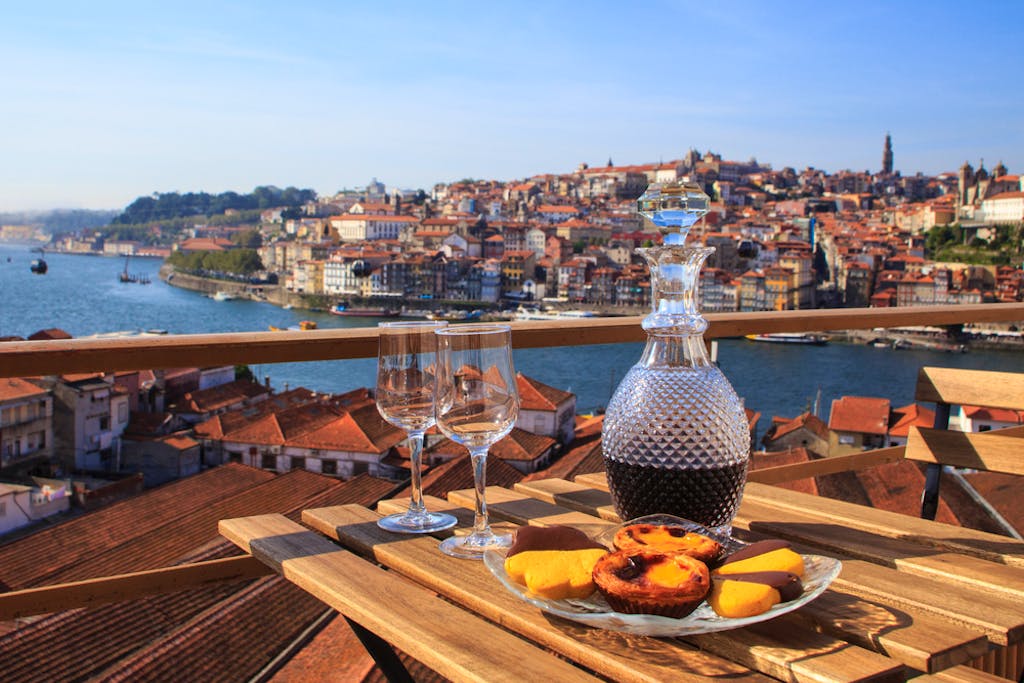
The second-largest city in Portugal, known for its winding cobblestone streets, amazing architecture, and its world-renowned port wine. This 900-year-old UNESCO World Heritage city sits along the Douro River near the Atlantic Ocean in northern Portugal. Six bridges cross the Douro, with the Ponte Dom Luís I being the most famous. Built in the late 19th century, it had the longest span of any bridge built at that time. Other popular experiences include exploring the city’s labyrinth neighborhoods, marveling at the 15th-century Gothic Church of St. Francis with its gold-adorned cherubs, and taking in the port lodges that nestle along the south side of the Douro in Villa Nova de Gaia.
4. Algarve
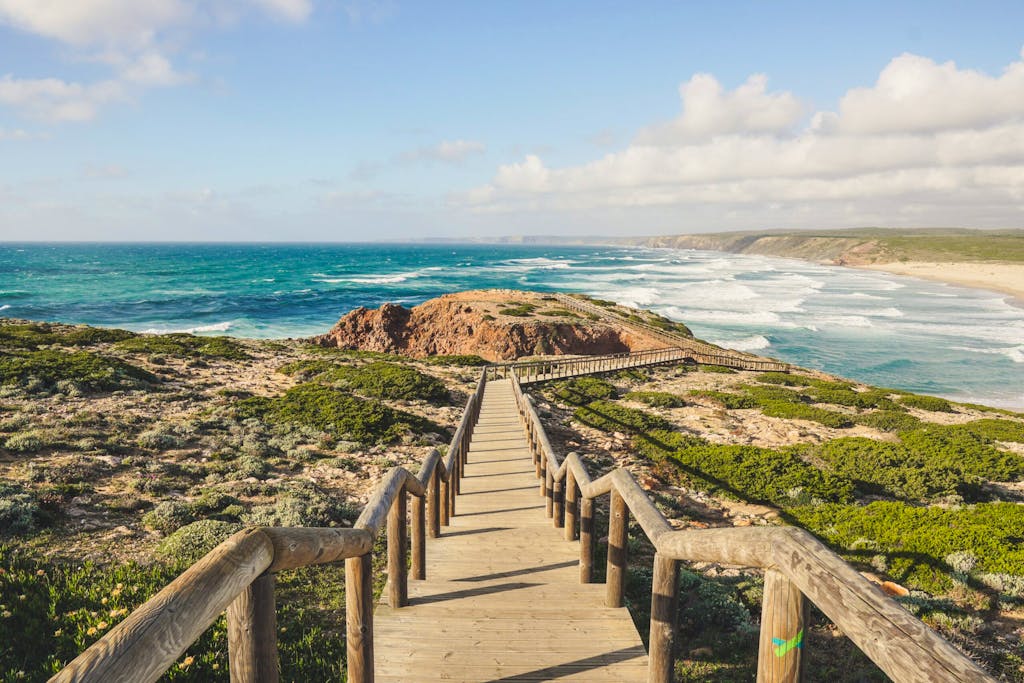
Portugal’s southernmost region, with stunning beaches, fishing villages, and a vibrant nightlife. Visitors can explore sea cliffs and coves as well as the four-km-long white sand beach of Praia da Ilha de Tavira. Architecture lovers will want to spend time in Tavira to see its Baroque buildings and charming town center between meals of fresh seafood at one of the region’s eight Michelin-starred restaurants. Afterwards, visitors can enjoy the lively nightlife in one of the area’s beach towns. The picturesque town of Lagos is a favorite town for visitors, especially the sea cliff views from Ponta da Piedade.
5. Coimbra
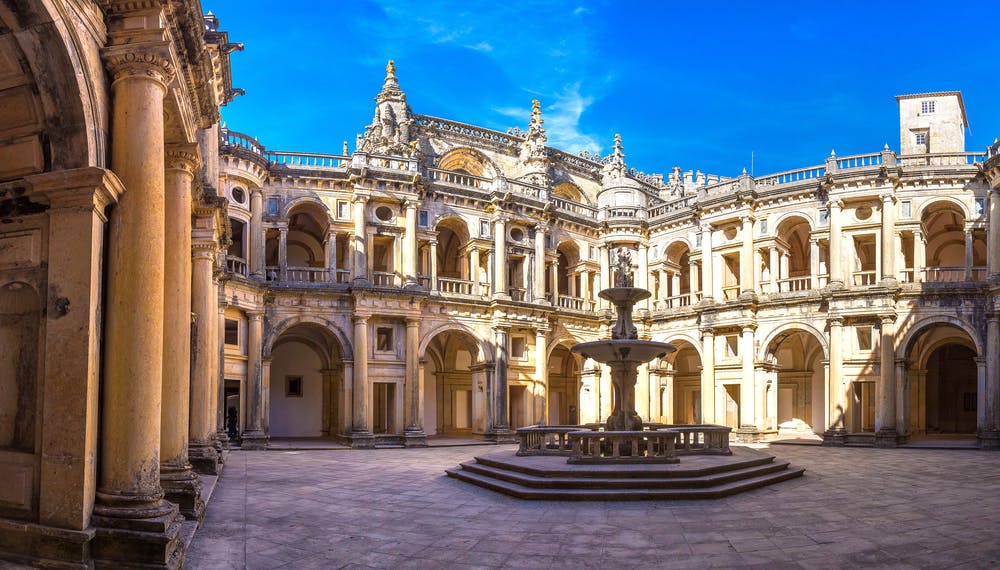
Portugal’s oldest university town, with a beautiful old town and plenty of green spaces. Situated in the middle of the country, Coimbra provides plenty of sights for exploration. Its most famous building is the UNESCO-listed university, one of the oldest universities in Europe (and the oldest in Portugal). Ancient Roman ruins, cathedrals, and monasteries from the 13th to the 19th centuries are also prevalent, watching over the youthful energy of the university students. Fado music originated here, and there will often be live performances throughout the city. The beautiful 18th-century Botanic Garden covers 32 acres with gorgeous plants, fountains, statues, a theme park, and impressive architecture—the entrance sits up against a 16th-century aqueduct.
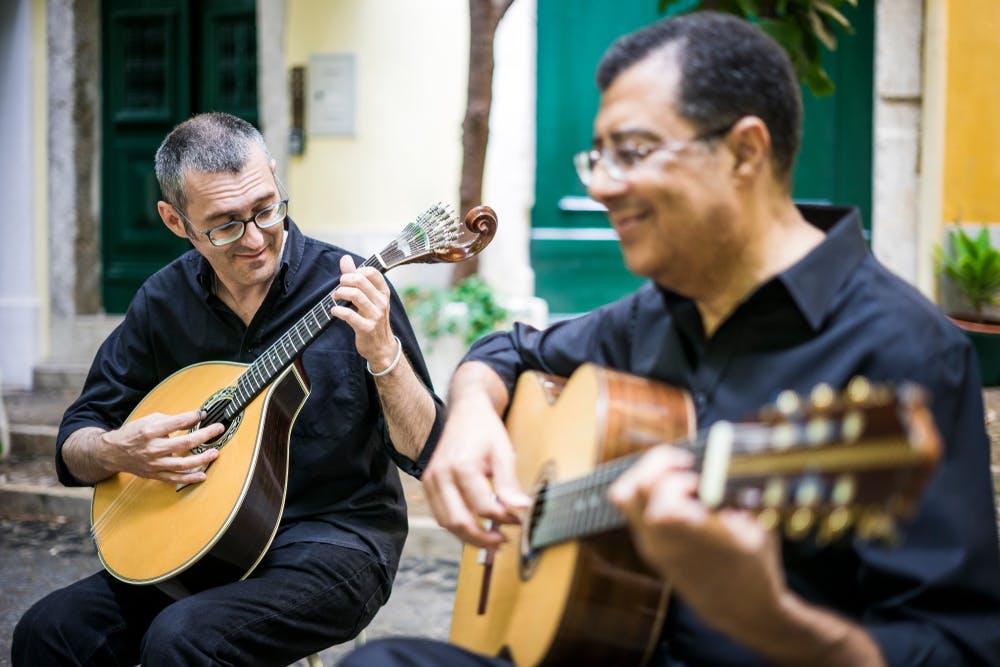
What are the best Portugal adventure tours?
1. Portugal Historic Village Hiking Tour
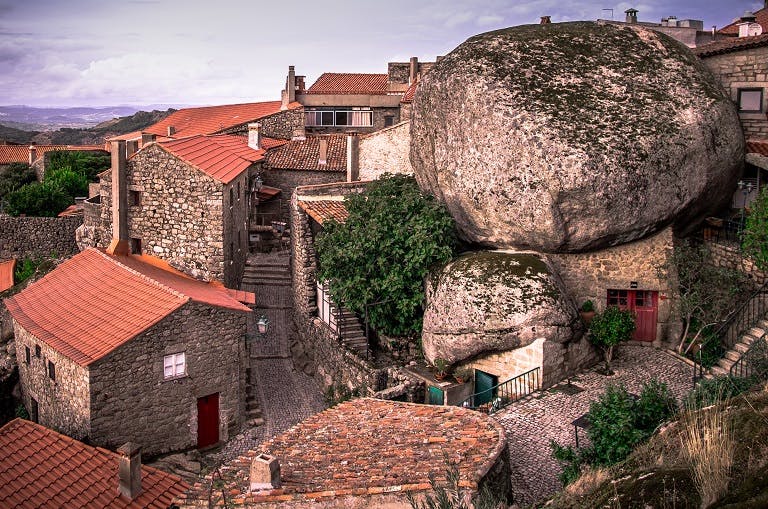
Explore Iberian Europe’s best-kept secret on this fascinating hiking tour through Portugal’s picturesque countryside. Discover a land dotted with medieval castles and hilltop villages as you journey along Roman roads and ancient paths. Experience the old-world charm of Monsanto, where houses are wedged between giant boulders, and Sortelha with its walled fortress. Then head to the rugged Serra da Estrela Natural Park, where great hiking trails abound. End by taking in the haunting sounds of fado singers on a walking tour of Lisbon’s old quarter. Feel the soul of Portugal as expert local guides bring the past and present to life.
2. Portugal & Spain El Camino Portugues Hiking Tour
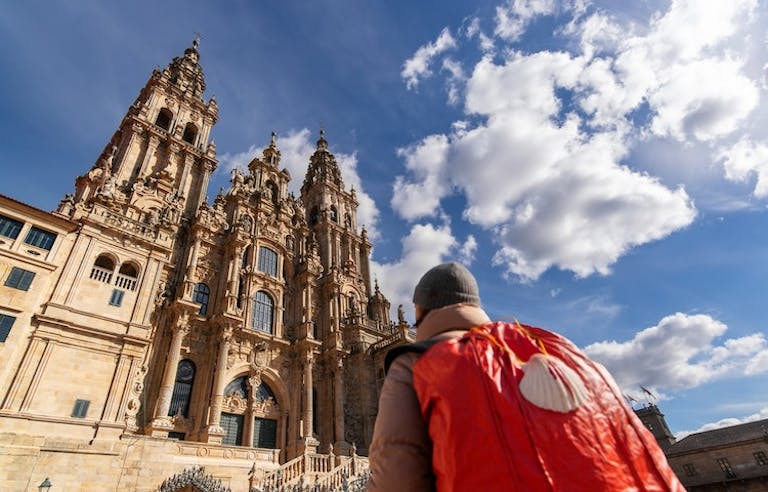
The original Portuguese Saint James pilgrimage – the Central Camino – begins in Lisbon, the capital of Portugal before journeying north to Santiago de Compostela in Spain. On this extraordinary, goal-oriented hike, trek along serene pathways and through lush forests, visiting historical Portuguese and Galician villages and passing the Río Tajo, the longest river on the Iberian Peninsula. Take time to enjoy the traditional cuisine and landscapes of this enticing region of North Portugal and Spain, while admiring stunning landscapes dotted with vineyards, olive groves, and Roman roads. As you reach the wild beaches and scenic lighthouses of Galicia, inhale the scents of the Atlantic Ocean. Normally, it takes 30 days to hike the Camino from Lisbon, but this trip will concentrate on the most beautiful parts of the trek, making the most of our time and focusing on the most interesting villages and landscapes. At night, stay in excellent four- and five-star hotels that offer a good night’s rest and contemporary comforts. This official Camino pilgrimage route includes Lisbon, the Templar city of Tomar, Coimbra, Oporto, Braga, Tui and its Cathedral, heritage packed Pontevedra and, the ultimate goal, Santiago de Compostela. This can also be paired with the classic Camino de Santiago across northern Spain!
Where are the best places to stay in Portugal?
Accommodations in Portugal vary depending on your budget and where you plan to stay. You can find everything from hostels and budget hotels to luxury resorts and apartments. Many hotels offer amenities such as swimming pools, fitness centers, and on-site restaurants. Airbnb is also an option in Portugal, offering a variety of apartments and homes.
1. Hotel Fonte Santa: Monfortinho, Portugal
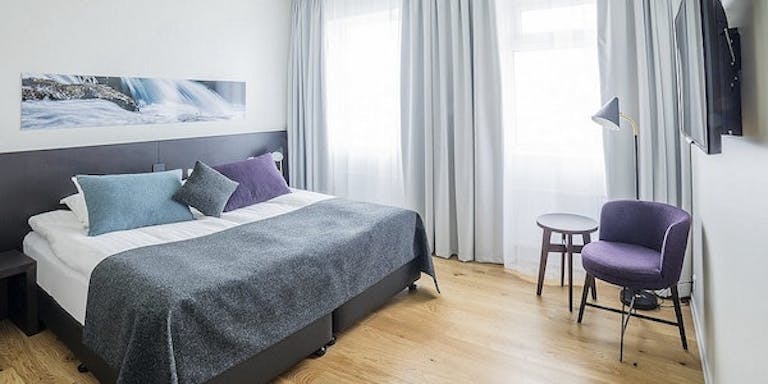
The recently renovated Fonte Santa is a charming, upscale hotel that was built in the early 1940s, surrounded by a wild natural landscape in the foothills of Penha Garcia. All rooms offer modern amenities such as flat-screen TVs, minibars and safes, and breathtaking views of the beautify surroundings.
2. Hotel Melia Palacio da Lousa: Lousa, Portugal
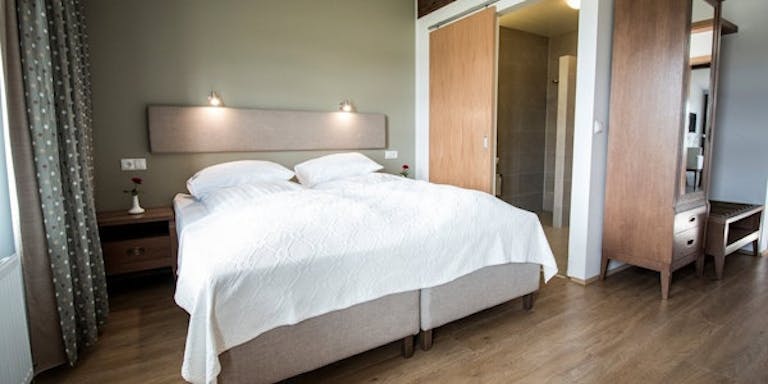
Inside an 18th-century palace in Lousa’s historical center, Hotel Melia Palacio da Lousa has been reimagined as a boutique hotel that blends the charm of an historical setting with state-of-the-art technology. Guests can enjoy an excellent meal in the restaurant, a dip in the pool, or a cocktail outside on the patio with gretat mountain views.
3. Hotel Republica: Tomar, Portugal
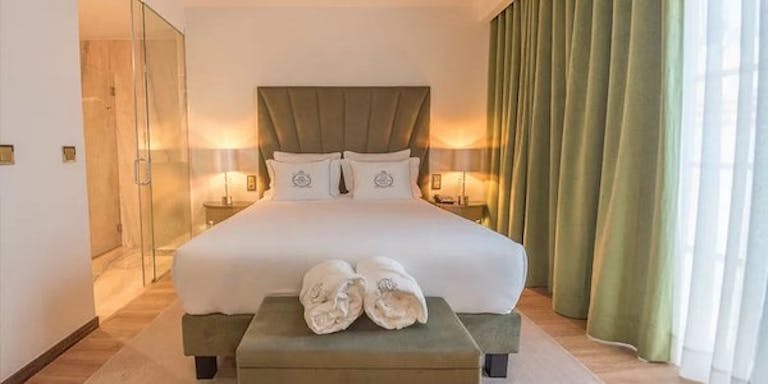
Designed and built entirely by Portuguese companies, this five-star boutique hotel oozes local vibes. Its 19 rooms come complete with many comforts, from marble bathrooms with walk-in showers to plush bathrobes. Right in the heart of town, the hotel places you perfectly for easy exploration of Tomar and its sights.
4. InterContinental Porto: Porto, Portugal
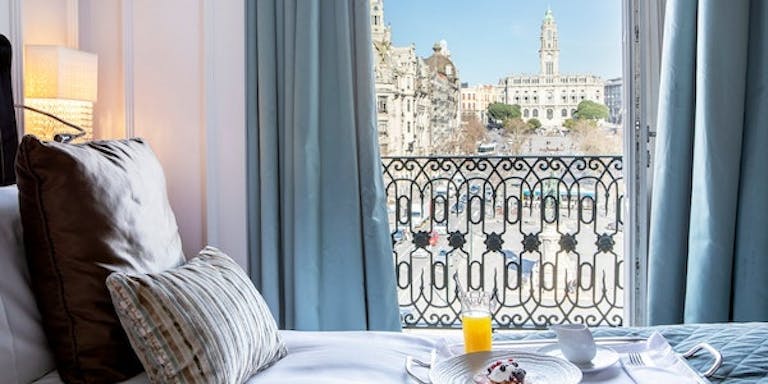
Located in the historic center of Porto, the InterContinental Porto is an urban, luxurious oasis of comfort. Each room offers modern amenities, including complementary Wi-Fi, a mini-bar, and a marble bathroom with a bath and shower. Spend your free time by dining on the culinary delights of the exquisite three-course menu at Astoria Restaurant, pampering yourself with a massage or spa treatment, recharging your energy at the fitness center, or sipping on cocktails at the bar.
5. Sofitel Lisboa Liberdade: Lisbon, Portugal

Poised on Lisbon’s grandest and most exclusive boulevard of Avenida da Liberdade, the five-star Sofitel puts you close to the city’s famous sights. The hotel’s 163 rooms are all well-appointed, equipped with LCD TVs, minibars, and Wi-Fi. Enjoy a snack or a nightcap at Matiz Lisboa restaurant and bar or stay in shape with a workout at the fitness center.
Interesting Things to Know About Portugal
- Portugal was the world’s first maritime empire, with colonies in Africa, Asia, and South America. It was also the first European country to reach Japan, arriving in 1543—albeit by accident as the ship was blown off course by a storm and shipwrecked off the island of Tanegashima, Japan.
- The Portuguese language is one of the top ten most spoken languages in the world. An estimated 260 million people speak Portuguese. It is the official language of nine countries, with Brazil being the largest (and therefore Portuguese the most spoken language in the Southern Hemisphere).
- Portugal is the oldest nation-state in Europe and the only one to have kept its borders unchanged since the 12th century. The area dates all the way back to 400,000 years ago and has been inhabited by Romans, Celts, Germanic tribes, Muslims, and eventually Christians who formally established the country’s borders in 1143.
- Portugal is home to Europe’s oldest bookstore, Bertrand Bookstore, which has been in operation since 1732. Located in Lisbon’s Chiado district, the bookstore exterior is covered in gorgeous azuelo tiles and includes a small café in the back. If you make a purchase, the staff will even mark your book with a stamp that reads that you bought it at the world’s oldest bookstore.
- Portugal is the world’s leading producer of cork, with 70% of the world’s cork exports originating here. The country is also home to the world’s largest cork forests, covering an astounding 1.8 million acres.
What is the language in Portugal?
Portuguese is the official language of Portugal. In addition to Portuguese, several minority languages are spoken in Portugal, including Mirandese, which is spoken in northeastern Portugal. Other regional languages include Barranquenho and Minderico (which was once a trade language spoken by traders in Portugal’s Centro Region).
What to eat in Portugal?
Portugal has a wide variety of delicious traditional dishes, all of which can be found in Michelin-starred restaurants, country inns, luxurious hotels, and from street food vendors. With one of the country’s borders sitting up against the Atlantic Ocean, seafood is prevalent—expect to eat sardines, clams, octopus, and lobster. Inland areas will offer more meat-based dishes such as suckling pig, frango assado (roast chicken), or the simple bitoque (lean fried steak with fries and rice). Some of the most popular dishes include bacalhau (salted codfish), cozido (stew), caldo verde (green soup), and pastel de nata (custard tarts). For dessert, try arroz doce (rice pudding) or bolo de bolacha (biscuit cake).
What is the currency in Portugal?
The currency used throughout Portugal is the Euro, which makes it easier if you’re coming from another country in the EU. Before the euro, Portugal’s currency was the escudo (200 excudos = 1 euro). Note that Portugal leans towards cash—while many businesses will take credit cards, once you leave the larger cities, cash is a better option. So, plan to have some euros in hand when traveling.
What is the electricity in Portugal?
The electrical current in Portugal is 230 volts, 50 Hz. The plugs and sockets used in Portugal are Type F, which has two round pins. Check the voltage on your personal electronics chargers to determine if you need a voltage converter, but most US travelers will need a converter as US electronics are 110-120V (type A or B outlets). A good resource to see images of plug types is www.power-plugs-sockets.com.
What is the time zone in Portugal?
The time in Portugal is Greenwich Mean Time, which is four hours ahead of New York and eight hours ahead of California.
What to wear in Portugal?
Generally, locals in Portugal dress casually, but with style. Wear comfortable, breathable clothing to help stay cool. Wear layers for the colder mornings and evenings, and plan on shedding layers as the sun rises. T-shirts, tanks, and dresses are common for hot days, and sun protection is important so bring a hat, sunglasses, and sunscreen. For dinner, plan on wearing dressier clothes like a button-down shirt, nice jeans, or a dress, and some nice shoes. The key is to look smart and put together but casual at the same time.

